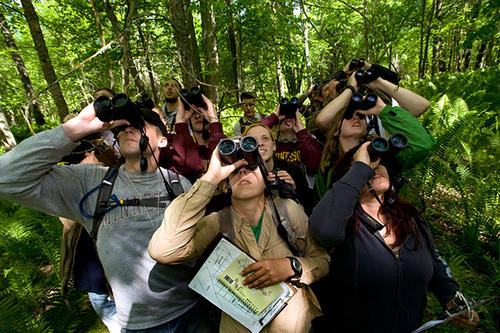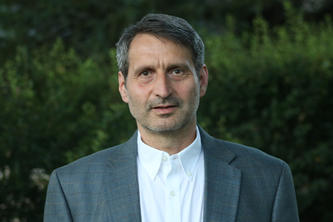
Imagine being a scuba diver and leaving your oxygen tank behind you on a dive. Or a mountain climber and abandoning your ropes. Or a skydiver and shedding your parachute. That’s essentially what humans are doing as we expand our footprint on the planet without paying adequate attention to impacts on other living things, according to researchers from the University of Minnesota’s College of Biological Sciences. Because we depend on plants and animals for food, shelter, clean air and water and more, anything we do that makes life harder for them eventually comes around to make life harder for us as well.
But, reporting with colleagues from around the world in this week’s special biodiversity issue of the scientific journal Nature, the researchers also note that all is not lost, and offer specific strategies for turning that tide before it’s too late.
Forest Isbell, associate director of the Cedar Creek Ecosystem Science Reserve, and coauthors from eight countries on four continents provided an overview of what we know and still need to learn about the impacts of habitat destruction, overhunting the introduction of non-native species and other human activities on biodiversity. In addition, they summarized previous research on how biodiversity loss affects nature and the benefits nature provides — for example, a recent study showing that reduced diversity in tree species in forests is linked to reduced wood production. Synthesizing findings of other studies, they estimated that the value humans derive from biodiversity is 10 times what every country in the world put together spends on conservation today — suggesting that additional investments in protecting species would not only reduce biodiversity loss but provide economic benefit, too.
“Human activities are driving the sixth mass extinction in the history of life on Earth, despite the fact that diversity of life enhances many benefits people reap from nature, such as wood from forests, livestock forage from grasslands, and fish from oceans and streams,” said Isbell, who served as lead author the paper. “It would be wise to invest much more in conserving biodiversity.”
In a separate review article, Regents Professor David Tilman and colleagues from the United States, the United Kingdom and South Africa took a look at how threats to biodiversity are expected to grow as human population and GDP increases around the world. With an additional 3.2 billion people expected by 2060, most in sub-Saharan Africa, and standard of living expected to rise at the same time, demand on natural resources and extinction threats to land mammals and birds will both become more severe. However, based on reviews of multiple studies, the team concluded that by boosting crop yield, reducing the amount of animal-based protein in our diets, strategically using the most productive land for food production, and preventing overhunting and poaching, we can dramatically reduce the increase in extinction rates the world faces as a result.
“The policies and actions that we adopt now will … be instrumental in determining which, and how many, species will survive the present era of environmental change,” Tilman and colleagues wrote. “With forethought and timely action, these goals can be achieved.”
The University of Minnesota College of Biological Sciences seeks to improve human welfare and global conditions by advancing knowledge of the mechanisms of life and preparing students to create the biology of tomorrow. Learn more at cbs.umn.edu.
- Categories:
- Science and Technology





